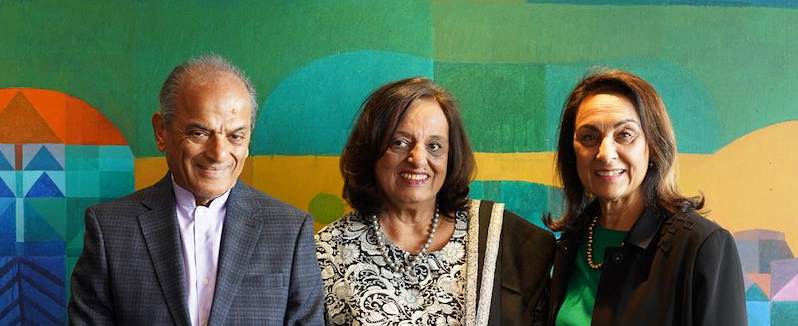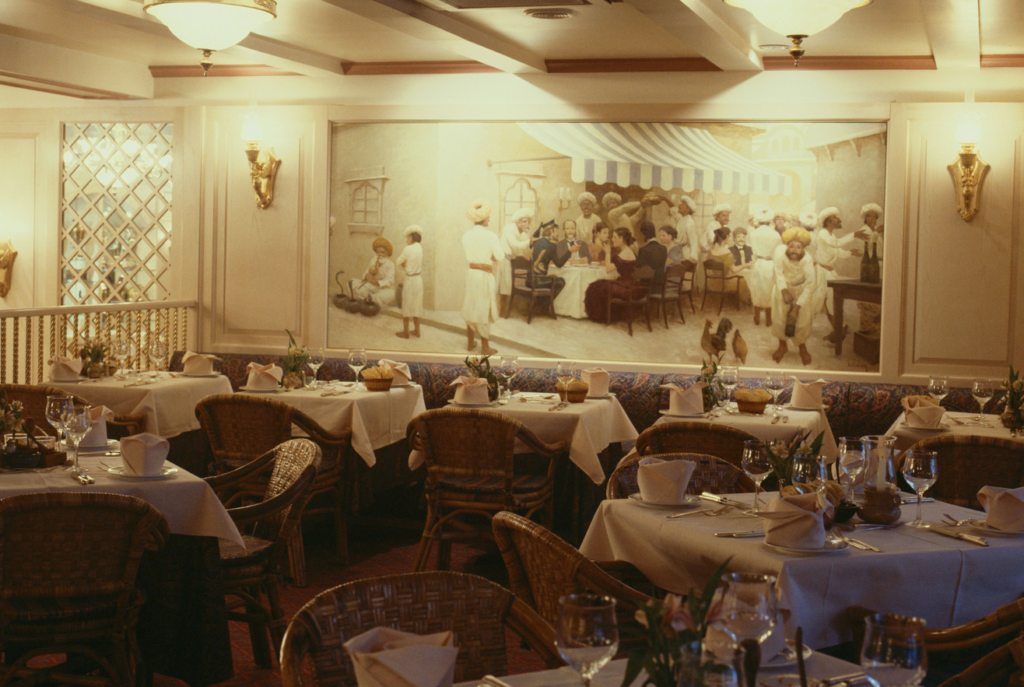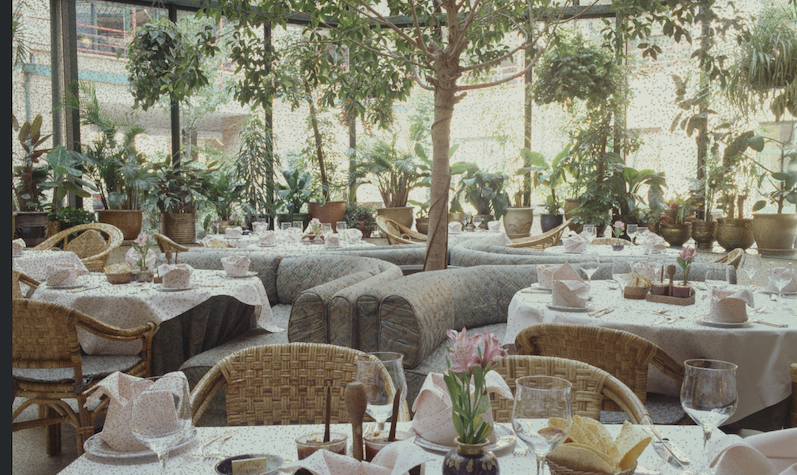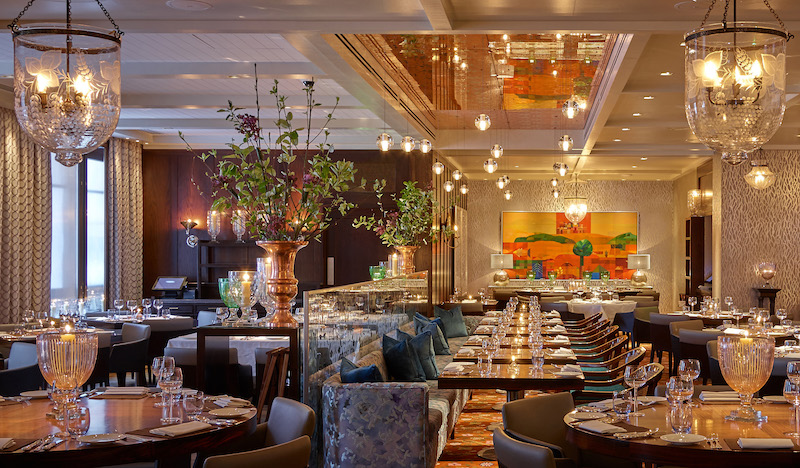
Chutney Mary: Owners Ranjit Mathrani and Namita Panjabi with Director Camellia Panjabi (centre)
Chutney Mary’s place on the London dining scene over the last thirty years is well worth celebrating! To take in the full scope of its achievements, it is important to step back and develop an understanding of the ever-changing dynamics of the market it has continuously helped to shape. This must be coupled with consideration of the background to the opening in the context of the market at that time.
The 2020 global experience placed to one side, London is renowned as home to a great culinary diversity, making it a gastronomic destination of choice for the adventurous traveller. Perhaps only New York bears comparison on a global scale. Generations of tourists, in ever increasing number, have made their way around the world, immeasurably broadening their horizons. From a food perspective, many have enjoyed experiences of authentic ethnic cooking in its indigenous setting. A natural knock-on effect has seen the demand for similar offerings at home. The experience of such places must also be equal to or better than those experienced abroad. This forms just part of the reason for London’s flourishing and vibrant restaurant scene.
We might reasonably hope that next year, discerning top end restaurant diners in London will continue to enjoy not only greater choice of cuisines, but also continue to dine out with greater frequency. One might argue that it is more than a function of economics – perhaps a cultural shift has been at play. The 2019, well-heeled, younger demographic not only had greater disposable income to eat out more often but also chose to do so in a more adventurous way. The benefit of a cultural shift over a fluctuating economy is that should there have been a cultural evolution in dining habits, then demand is more stable in a downturn. Hopefully, a healthy competitive market next year will not only look like this but will also help maintain appropriate standards.
Rewind a few decades and London boasted relatively few top-end eateries, of particular sparsity were quality Asian restaurants. As late as the 1980s, you might have found the occasional outpost of Asian glamour, such as The Bombay Brasserie off Gloucester Road or the royal Thai cuisine of The Blue Elephant in Fulham Broadway.
It is worth noting that thirty years ago we were pre- World Wide Web. At that time, a would-be customer learned about available restaurants from print media, either via reviews in the broadsheet newspapers or from guide books. At a certain point, the globally instantaneous, interactive and responsive, information superhighway of the digital world became pervasive. The web phenomenon may well have exceeded travel as a demand pull for ethnic cuisine, where reviews abound, social media excites and knowledge transfer is everywhere. Our appetites are whetted in everything we encounter in the multi-media online world.

Chutney Mary Interior, King’s Road, 1990
So, looking back, it is harder than one might first imagine to step into the shoes of Namita Panjabi and Ranjit Mathrani as they considered their options. To appreciate the landscape of that time, somewhere between Bibendum (for size) and Bombay Brasserie (for cuisine) was about the only semblance of an example business model. How brave and visionary those restaurateurs were in seeing a successful upscale, top-end, Indian restaurant. Furthermore, one that was situated on the sophisticated, thriving and fashionable, King’s Road in Chelsea. In 1989 Namita Panjabi and Ranjit Mathrani formed Chelsea Plaza Restaurants which was later renamed Masala World. The company was formed to create Chutney Mary.
Chutney Mary was born in the summer of 1990. The calculated risk paid off almost immediately, as it transpired that the new concept struck a chord with the adventurous local residential gentry, who were ready to experiment with a more sophisticated interpretation of Indian food. A formidable following developed, not just locally, but also from a broad destination spectrum. From the well-travelled, particularly Indophiles, to the curious local diner, Chutney Mary would regularly satisfy 150-200 guests per evening service within its one hundred-seater space.
The press reviews were united in their praise and admiration. The restaurant was also the recipient of awards from The Evening Standard (Eros Award), Harden’s, Square Meal and Tio Pepe Carlton. Further, Curry Clubs Best Indian Restaurant in the UK award made The BBC Evening News. From Fay Maschler to Zagat and from Tatler to The NY Times, journalists and critics commented on the ever evolving and consistent quality of the food, alongside “a look that is shimmering and seductive.”
Camellia Panjabi, Namita’s sister, would later join as a director of the company, which was to become the broader MWEat Group. Camellia was a pioneer herself, with an Economics degree from Cambridge, working for Tata Group, she was tasked with making a success of the marketing of the Taj Group of Hotels. Her passion was food and she worked on a project to bring the diverse cuisines of the continent into the Hotel Group in a luxury Indian cultural setting. As well as enjoying success across India, one such outpost of The Taj Group was the 1982 launch of the aforementioned Bombay Brasserie in London.
Overall, her food project was a daunting challenge, as India constituted a country with around 1.2 billion people, 14 different languages, 29 States, 7 Union Territories, not to mention various cultures – thereby demonstrating contrasts in cuisine type at least as wide as those found between countries across Europe. Furthermore, recipes from the south had to be eked out from families or private cooks across the country. A by-product of this work was Camellia’s best-selling recipe book ’50 Great Curries of India’ which has sold around two million copies world-wide. In 2013, Camellia was awarded an MBE.

Chutney Mary Interior, King’s Road, 1990
As Chutney Mary’s success expanded it garnered a global reputation and provided a blueprint for the influx of other Indian master chefs to feed the market that they had created. One might argue that they enabled the space in which Atul Kochhar, Vineet Bhatia and Sriram Ayur were to flourish. The latter coming to London at Quilon a decade after launching Karavali restaurant in Bangalore under the then strategy remit of Camellia Panjabi at Taj Hotels. Where trailblazers go, others will follow and this is an important aspect of the Chutney Mary legacy as it celebrates 30 years.
By 2015 the lease on the King’s Road premises had run its course. This provided the ideal opportunity to review the best location to suit the past, present and future of the Chutney Mary client base. After an extensive search the current site on St James’ Street was found, although it was not love at first sight for the owners. An inspired interior designer, along with their Feng Shui consultant put their mind at ease and made them excited about the potential of the new premises. A potential that has more than been fulfilled. Certain aspects needed tweaking, including where to place a private dining room, the cloakrooms as well as stripping back all the décor.
There is a plush, upmarket long bar called Pukka Bar, serving cocktails, vintage champagne, artisanal gins and malts as well as small plates to casual visitors. The recent restaurant menu has seen starters replaced by small plates and a move toward lighter eating, principally to attract the lunch trade. A grilled section is complemented by slow cooked curries, vegetarian dishes, sides and grains. The restaurant has always been busy and continues to attract a crowd even in these challenging times. The dining room may be seen variously as one for special occasions, a discreet business meeting venue or a social meeting place for friends. The charming, friendly and informative service ably matches the quality of the food, while measuring and meeting their guests needs with care and attention.
All this while remaining true to its principles; being innovative in so many ways. It was the first to bring Anglo-Indian food of the Raj, including plated courses rather than sharing dishes. It was the first to bring highlights of pan-Indian food, which was globally ground breaking. The recipes are cleverly adapted, using the latest techniques by master chefs, bringing a modern twist to the interpretation of dishes, that enhance flavour to the sensibilities of a London palate.

Chutney Mary, St James’, 2020
There is a subtle evolution that retains old favourites, while forever encouraging the new and exciting to the menu. Authenticity and complexity of the menu is provided by chefs trained and recruited as masters from their region of origin.
Indeed, the painstaking and expensive recruitment process, is made even more complex by the need for a relatively flat kitchen management structure. This is because the expert chef of one region will not work the ‘section’ of another expert chef’s region. There is also often an under appreciation of the extent of cooking processes that go into Indian cuisine at these heights. Uncompromising sourcing of produce of the highest quality is matched by detailed multi-stage cooking, with impeccable timing as an absolute necessity for consistency. All are in abundance over the life of Chutney Mary and as such an ongoing requirement of the diligent and focused owners who regularly taste and review the menu for the benefit of their customers.
Prime Ministers past and present have been patrons of the restaurant, along with the obligatory smattering of celebrity to complement the loyal regulars. The critic AA Gill was a notable friend of the house, quoted as saying “If there is a better pan-Indian restaurant in London than Chutney Mary I haven’t eaten in it.” A sentiment wholeheartedly echoed by fine dining guide and one that may equally apply to a loyal band of discerning customers. Congratulations to Chutney Mary, happy 30th birthday! May there be many more to celebrate with you…



